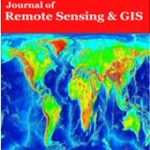Open Access

Segura-Muñoz F.J.

Armenta-Déu C.

Domínguez-Bravo F.J.
- PhD (in progress) Dpt. of Matter Strcuture, Thermal Physycs and Electronics. Faculty of Physical Sciences. Complutense University of Madrid Madrid Spain
- Professor Dpt. of Matter Strcuture, Thermal Physycs and Electronics. Faculty of Physical Sciences. Complutense University of Madrid Madrid Spain
- Researcher Dpt. of Matter Strcuture, Thermal Physycs and Electronics. Faculty of Physical Sciences. Complutense University of Madrid Madrid Spain
Abstract
In this work, we develop a new modelling process to optimize the PV installation layout on industrial building rooftops; the model searches for maximizing the number of installed PV panels in a defined spot area, characterized by its shape, size, tilt and orientation. The study focuses on areas of latitude between tropics, but is useful for other latitudes. The method is applied to an industrial conglomerate of reference, made up of 34 industries, whose geographical characteristics have been provided by the GIS technique. The proposed model reduces the area of the spot to a very small size (5m x 5m), thanks to the use of the GIS tools, thus increasing the precision of results and making the solution more reliable. The accuracy of the method is over 98.5%. The model takes into account not only the shape and size of the PV panel but also the tilt angle. The model predicts the number of panels as a function of the tilt angle of the panel and the azimuth of the rooftop. The modelling process has allowed obtaining the surface coverage factor of the PV layout for panels facing to the Equator in rooftops with a specific azimuth. The results of the modelling shows that coverage factor increases with the rooftop’s azimuth, having a minimum value of 75% for a rooftop azimuth of 45° and a maximum of 92% for angles of 5° and 85°.
Keywords: Coverage factor, GIS technique, PV panels, rooftop
[This article belongs to Journal of Remote Sensing & GIS(jorsg)]
Browse Figures
References
1. Friedlingstein P, O’Sullivan M, Jones MW,et al.Global carbon budget 2020. Earth System Science Data. 2020;12(4):3269-3340.
2. Agencia Internacional de la Energía (AIE), Estadísticas de la AIE © OCDE/AIE, iea.org/stats/index.asp.; Estadísticas de energía y balances de países no pertenecientes a la OCDE; Estadísticas de energía de países de la OCDE, y balances de energía de pa,‖ 2019. [Online].Available:https://datos.bancomundial.org/indicador/EG.USE.ELEC.KH.PC?end=2014&locations=MX&start=1960&view=chart.
3. . T. A.-T. T.- onz lez Velasco, Energías renovables. Editorial evert , arcelona. 1st ed. Editorial Reverté; 01-01-2009.
4. I. Renewable Energy Agency, Renewable Energy Capacity Statistics (2019)[Online] Available fromhttps://www.irena.org//media/Files/IRENA/Agency/Publication/2019/Mar/IRENA_RE_Capacity_Statistics_2019.pdf.
5. A. Duguay-Tetzlaff et al. Meteosat land surface temperature climate data record: Achievable accuracy and potential uncertainties, Remote Sensors.2015; 7(10):13139–13156.
6. S. De Proceso ,Estación de ecepción de Im genes del Sat lite Meteosat Segunda eneración : Arquitectura Informática y Software de Proceso CIEMAT; 2010.
7. ArcGIS. 2017, May. ArcGIS Help 10.2 – Using lidar in ArcGIS.. [online] Available from: https://resources.arcgis.com/en/help/main/10.2/index.html#//015w0000003z000000.
8. Zhong Q, Tong D. Spatial layout optimization for solar photovoltaic (PV) panel installation. Renewable Energy: 2020; 150:1-11.
9. Martín-Jiménez J, Del Pozo S, Sánchez-Aparicio M,et al. Multi-scale roof characterization from LiDAR data and aerial orthoimagery: Automatic computation of building photovoltaic capacity. Automation in Construction: 2020;109:102965.
10. Lingfors D, Bright JM, Engerer NA,et al. Comparing the capability of low-and high-resolution LiDAR data with application to solar resource assessment, roof type classification and shading analysis. Applied Energy: 2017;205:1216-1230.
11. de Vries TN, Bronkhorst J, Vermeer M, et al. A quick-scan method to assess photovoltaic rooftop potential based on aerial imagery and LiDAR. Solar Energy: 2020; 209: 96-107.
12. epsg.io. 2021, February. WGS 84 / UTM zone 14N – EPSG:32614. [Online]. Available from: https://epsg.io/32614. 13. Instituto Nacional de Estadística y Geografía de México. 2017, month. Espacio y datos de México.[online]Availablefrom:https://www.inegi.org.mx/app/mapa/espacioydatos/default.aspx?ag=151060001.
14. P. D. Paul W. Stackhouse, Jr. 2016, January. NASA Surface Meteorology and Solar Energy.
15. G. I. Northern et al. 2015, January. NASA Surface Meteorology and Solar Energy. [online] Available from: https://eosweb. larc. nasa. gov/cgibin/sse/grid. cgi.,2015.
16. O. Perpiñán Lamigueiro, Energía Solar Fotovoltaica. 2011th ed., vol. 2. Creative Commons España: Spain: 2007.
17. Python.org. 2021, February. Welcome to Python.org. [Online] Available from: https://www.python.org/.
18. Python.org. 2021, February. The Python Language Reference — Python 3.9.2 documentation. [online] Available from: https://docs.python.org/3/reference/index.html.

Journal of Remote Sensing & GIS
| Volume | 12 |
| Issue | 1 |
| Received | March 17, 2020 |
| Accepted | April 3, 2021 |
| Published | April 3, 2023 |

